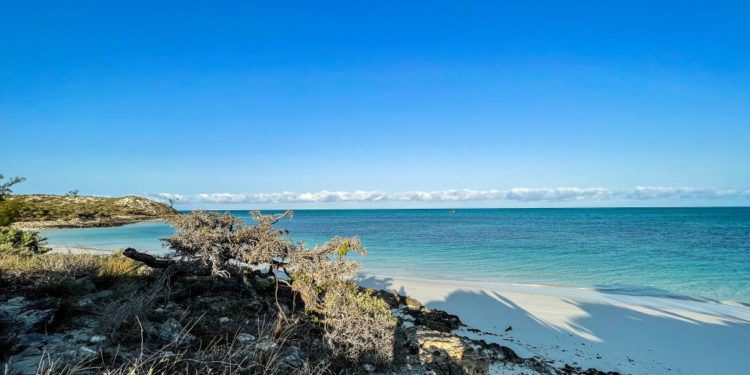DEUTSCHE WELLE
In Brussels, European Parliament member Marie-Pierre Vedrenne tries to explain her position on the continent’s policy on raw materials.
” Germany and the whole must act together to secure a sustainable and reliable supply,” Vedrenne, of the pro-European liberal political group, Renew Europe, tells DW.
“How the raw materials are extracted should live up to our vision of avoiding exploitation, and ensure children don’t work under horrendous conditions.”
7,000 kilometers south, near the mining town of Kolwezi in the Paul Zagabe Nbanze works in a copper and cobalt mine. His baseball cap is his only protection against the baking sun. Here, miners work by hand, and carry 50-kilogram sacks of rocks on their backs.
One hears the ceaseless, rhythmic beat of heavy hammers breaking the rock. Nbanze holds up two pieces, bashed from the ore.
“The white people buy this. We sell it, but we don’t really know what exactly they do with it,” he says.
No way around Congolese cobalt
The dusty red earth in Congolese areas and the air-conditioned halls of Europe are worlds apart. But a surging demand for cobalt connects them. Cobalt is a vital component of batteries, which are increasingly crucial to Europe’s energy transition to become climate neutral by 2050.
Two thirds of the world’s cobalt comes from the Democratic Republic of Congo. After producing just 800 metric tons in 1994, the yearly output was 98,000 metric tons by 2020. Meanwhile, cobalt production in the rest of the world has also doubled, but the growth remains comparatively small.
Dependencies reversed
Europe needs what Congo has, but the equation is not straightforward. “75% of cobalt processing happens in So if you want to actually use the cobalt, you must do business with China,” says Cecilia Trasi, climate and energy analyst for the European think tank Bruegel.
MEP Vedrenne is aware of this imbalance, and explains China currently controls most of the value-adding industries related to raw materials, from extraction to recycling. She says China’s methods in the DRC are exploitative, “with no intention of building capacity for adding value in Africa, even if that should be the goal.”
Few European players are visible in DRC’s mining areas, and, after refinement in China, the cobalt comes to after making at least 5 to 6 more stops, Trasi estimates.
For businessman Simon Tuma Waku, it is only logical that European countries are not necessarily desired partners for the DRC. He was the Congolese Minister of Mines and Hydrocarbons who sponsored the country’s first mining code in 2002 in the wake of the Second Congo War.
“African nations are saying you must also consider our wishes and feelings,” he says.
“Don’t force us to do something that you think is best for us. Rather ask us what we want to do. And we’ll tell you how you can invest your money.”
Congolese confidence
Over 100 years ago, slaves in the Congo Free State, effectively a private colony of Belgian King Leopold II, produced rubber for the European market under inhumane conditions and suffered unimaginable cruelties.
After the Congo gained independence in 1960, Mobutu Sese Seko took power in 1965. A system of nationalization, lack of investment and exploitative cronyism meant that hardly any profits remained in the DRC, and production eventually collapsed. Only under Joseph Kabila, the predecessor of current president Félix Tshisekedi, did attempts begin to regulate the mining industry, woo important companies and even collaborate with neighboring Zambia with the aim of entering the battery manufacturing industry.
“We opened the mining sector to private investors to save it from decay because the state was unable to attain large profits,” Tuma Waku says on the sidelines of a mining trade fair in Lubumbashi.
He praises his own mining code from 2002 for resuscitating the industry. Against the backdrop of gleaming new machinery and a host of international guests, Tuma Waku seems to have a point. The law was updated in 2018 to focus more on mining’s environmental sustainability.
European ideals
On closer inspection, there are signs of European projects in DRC. For instance, the much-hyped Lobito Corridor infrastructure project, aims to link Kolwezi with the Angolan coastal town of Lobito. New power lines, roads and railways would give mineral rich areas in southern DRC improved and direct access to the Atlantic Ocean and Western-oriented markets in Europe.
In Brussels, outgoing EU Commissioner for International Partnerships, Jutta Urpilainen, points out She says the EU and its member states have found new self-confidence under the slogan “Team Europe.” a response to China’s
“It’s important to invest in development cooperation, and that Europe remains a champion of climate financing, human development and global investment,” Urpilainen says, which is something that African partners expect.
But despite these efforts, Europe is unlikely to become the DRC’s number one trade partner soon. China still receives the lion’s share of Congolese exports, and responding to the whims of former colonial powers is far from a priority for regional and industry power brokers. Even progress made by the new Congolese mining law remains on paper. Local non-governmental organizations complain the government is making no effort to apply its own law.
Additional reporting: Jan Philipp Scholz, Johannes Meier, Kahozi Kosha. Editing by Sarah Hucal.



Connect with us on our socials: